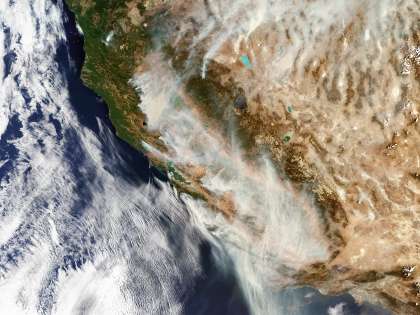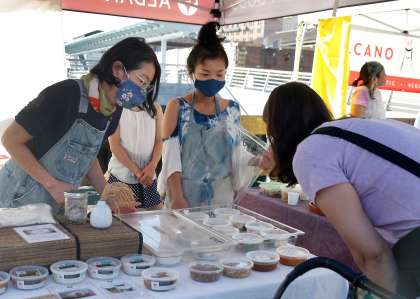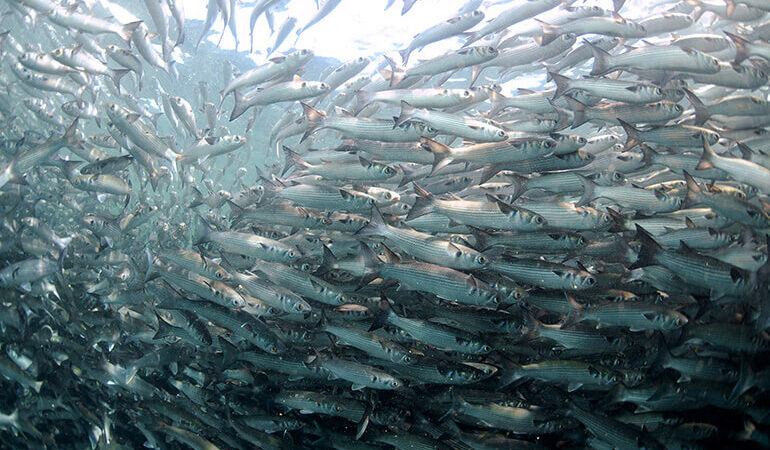Perhaps as you’re reading this, the sky is blue and clear. Ash is no longer drifting down, the memory of the orange, end-of-days sky that hung over the Bay Area is fading, and the glorious October weather has arrived. Perhaps you can almost forget the hellscape of August and September, the weeks of heat and smoke and purple air quality. Or maybe, right now, another fire has broken out and we’ve all been herded back indoors. As I write this, it’s impossible to know.
My husband and I moved from New York City to San Francisco in 2008, during the financial crash that ushered in the Great Recession. It was an anxious and unnerving time, but we embraced the West Coast, with its months-long heirloom tomato season and hiking trails and sense of adventure. In 2010, we drove an Airstream trailer from Los Angeles to Big Sur. Basically, peak California.
The fire season of 2016 is the first one I remember clearly — the scramble to get masks, the drone of air filters running 24/7 in our home, the compulsive checking of the air quality index. We drove with our young kids to Tahoe for three days, where the crisp, pristine air was like something out of Middle Earth. I gulped it in so eagerly my lungs hurt. When we got back to San Francisco, the haze had cleared. OK, we thought. We can do this.
Four fire seasons later, Bay Area residents’ relentless adaptability — buying filters, masks and generators, hunkering down for days on end, searching for clean air to drive to (except for this summer when there was none in any direction) — is starting to feel less like California can-do resilience and more like magical thinking.
For the first time, many Californians are asking themselves: How do you truly know when it’s time to leave? When do positivity and adaptability tip over into delusion?

The California dream was always built on a dash of delusion — the idea that we could pull riches from the ground, the conviction that we could irrigate the desert. That tension is built into what it means to live here, perched precariously on fault lines, figuring out the line between risk-taking and folly.
The internet is ablaze with versions of the “California is over” story, noting the high cost of living, the housing crisis, the heat waves and fires. But those stories often don’t get at the heart of what so many folks are grappling with now: that it’s hard to really think about leaving when there are still powerful reasons to stay.
“As soon as we get a scrap of green air, I think, nah, we’re good,” says Lisa Trottier, a senior copywriter at a tech company who lives in Berkeley with her husband and their two teenagers. “When the smoke was at its worst, I was on a text chain with friends talking about moving to Duluth, Minn. Then, after two hours of sun and clean air, everyone is like, f— Duluth.”
But as she considers places to move, she also finds herself instantly discounting them for their own issues: rising seas, Lyme disease, bad food, long winters. “I’ve become a Bay Area hothouse flower,” Trottier says. Despite flirting more seriously with leaving than she ever has, she thinks it will take another few years before she actually uproots her family.
For others, the risk of fires, the health impacts of yearly smoke and the days stuck inside with the windows closed have made the cost of living in the Bay Area hard to justify. “I told my husband, ‘We’re moving,’” says Megan, who lives in Marin and asked that only her first name be used since her husband hasn’t yet told his employer that they are relocating. “At first he fought me, but 24 hours later he was on my side.”
The tipping point for her husband — who grew up in Marin and wanted to raise his kids there — was driving back from Home Depot and not being able to see Mount Tamalpais through the smoke. For Megan, there was also the fear that a fire from the north would force an evacuation of Marin with only two ways out, across the Golden Gate or San Rafael-Richmond bridges. “If I thought our government or the world was doing something about climate change, I’d probably think, ‘OK, let’s see what happens,’” she says. “But no one is doing anything.”
The couple are relocating to Bozeman, Mont., with their two young children, hoping that fires there will not be as bad and that the lower cost of living will mean if they have to pick up and move again, it will be easier next time.

Others, though, find compelling reasons to stay. Mariko Grady started Aedan Fermented Foods seven years ago, selling traditional Japanese fermented items like koji and miso. During the pandemic she’s seen an uptick in customers at her stall at the Ferry Plaza Farmers Market. “Before, half of all the customers were tourists,” she says. “Now it’s mostly locals and more crowded at my booth.”
Grady is part of La Cocina, a nonprofit kitchen incubator focused on women of color and those from immigrant communities. At a time when anxiety and stress are high, she feels good about running a business that provides healthy food. She has not heard of any fellow La Cocina entrepreneurs leaving the city this year, but some of her favorite vendors at the market had their farms destroyed in the fires near Santa Cruz. “I wish there was some way to stop the fires,” she says. For the first time since joining the farmers market in 2013, she had to skip it in September due to poor air quality.
Parents are also getting hammered. A child care provider in San Francisco, who agreed to speak on the condition of anonymity to protect her clients’ privacy, has seen firsthand the toll the pandemic and wildfires have taken on families. “With parents, there’s confusion, frustration, a turbulence of emotion,” she says.
Some of her clients have already moved out of the city, and she worries about whether she will be able to keep her business open as more families choose to leave. “People who are financially independent will adapt,” she says. “They can make the choice to leave or stay. I worry about the families who don’t have those choices.”
Even for those privileged enough to have options, approaching the decision logically is hard right now, says Laura Capinas, a clinical social worker in Sonoma who works with children and adults who have experienced trauma. “We’re in a global pandemic on top of year after year after year of fires,” she says. “There’s been no chance to recover.”
After months of hypervigilance, our brains haven’t had the time to settle and reset, so we may react more emotionally or irrationally. “Deciphering between what’s a rational decision versus what’s an irrationally fear-based decision becomes very challenging,” Capinas says. Especially since, right now, a fear-based decision may actually be the rational choice.
In her private practice, she’s observed that among families who have lived here for generations, there’s no real talk of leaving. They have deep roots that would be harder to sever, no family elsewhere pulling them away. People without that generational tie seem more open to relocating.
“After last year’s fires, I told my husband, I think I’m done,” says Capinas. “I’m a PTSD specialist, that’s what I do, and here we were evacuating again, the embers 400 meters from our home, the sheriff’s sirens coming to our home at 4 a.m.” She describes the surreal experience of fielding calls from schools and community organizations about families in crisis while she was packing her own bags to flee. This week again her phone has been ringing off the hook.
“What’s so hard is this is my husband’s dream. We came out West, we have our house and a small vineyard, we did every piece of landscaping ourself. Letting go of all that for him feels like a defeat. But then it’s also the question, every year, are we even going to be insured? What is this doing to our health?”
It comes down to a personal calculation, fresh in the minds of so many Bay Area residents: How many of these cycles can each of us endure?
And yet, if right now the sky is clear and the weather is mild, if you’re hiking through the Marin Headlands or skimboarding on China Beach or taking in the view from the top of Dolores Park, it’s easy to fall for the California dream all over again.
And wait to face the same impossible question and calculations again next year.
Anna Nordberg is a Bay Area writer. Email: culture@sfchronicle.com




Recent Comments